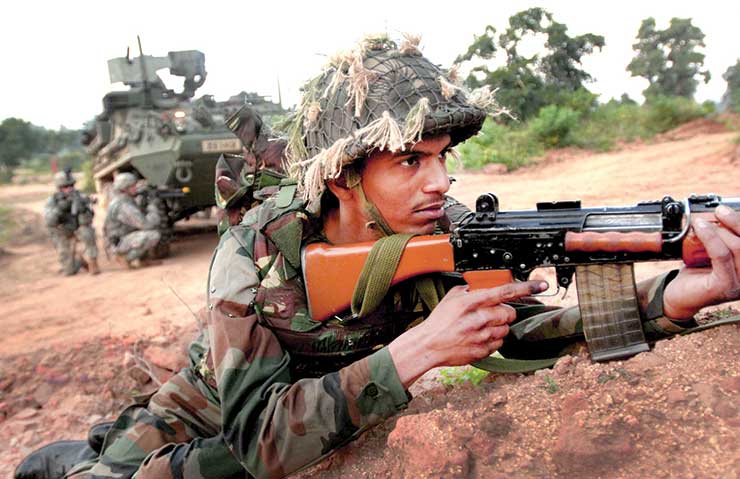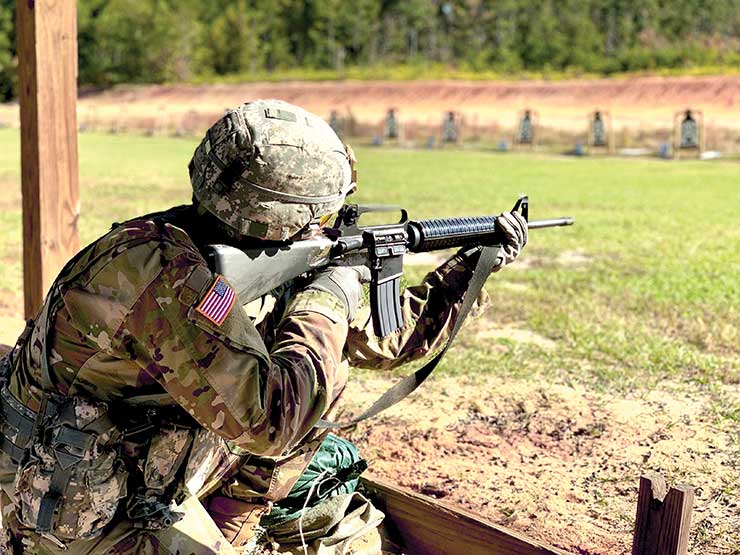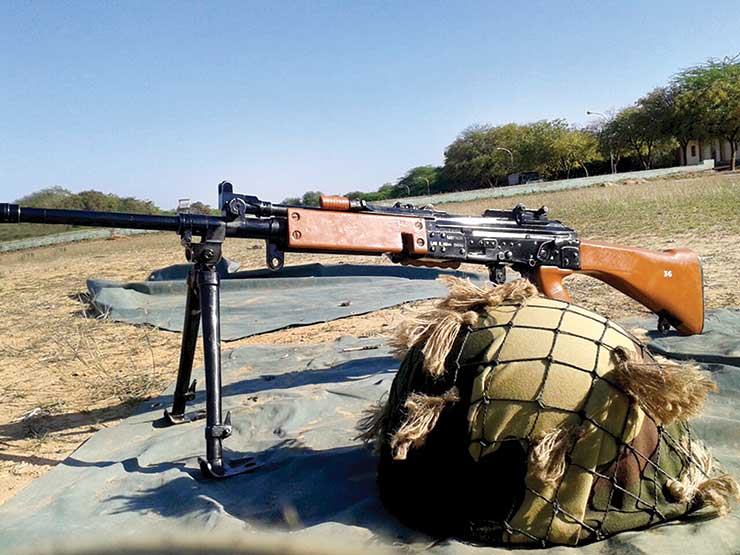
Perhaps the only good thing about the demise of the INSAS is that its comparatively smaller 5.56 mm calibre round is a liability in modern warfare. The Indian Army had long subscribed to the Western military wisdom that the 5.56 mm rifle is better suited for war because it generally injures an enemy soldier, thereby tying down two of his mates who would carry him to safety. On the other hand, the 7.62mm bullet usually causes death, thereby eliminating the soldier from the battlefield.
The current thinking makes a 180-degree turn. Firstly, soldiers don’t pick up a fallen comrade during a charge. For, that would not only slow down the charge but also expose the rescuers to hostile fire. No army in the world teaches such tactics to its soldiers and it is therefore surprising that such ‘wisdom’ prevailed for so long.
During the Vietnam War, the first major war in which both sides fought with automatic weapons, the US Army found that its M-16 was more accurate than the AK-47s of the Vietnamese Army when firing individual shots at shorter ranges. But the wounding power of the M-16’s 5.56mm bullet fell off rapidly at ranges over 100 meters. While the 7.62 rounds have an overall lower velocity, they do tend to hold on to their velocity better than the 5.56 where velocity bleeds off rapidly.
The 7.62mm bullet is also capable of travelling longer ranges. It is easily capable of 800-metre hits on a human size target though most battlefield engagements happen within 300 metres. A declassified CIA report titled ‘Some Points on the Status and Development of Small Arms’ is a must read for the Indian Army brass. The report, published in the CIA’s Military Thought journal, says the 7.62 mm calibre rifle is much better when it comes to combat. “This cartridge will kill a soldier at ranges of up to 1,500 metres and with full reliability penetrate a helmet or armoured vest at ranges from 600 and 900 metres,” says the US report.

Also, being a heavier round it is less affected by cross winds especially at longer ranges, thereby improving accuracy. According to the military website Strategy Page, “The larger and heavier 7.62mm round is more effective at blasting through walls and doors, and many troops believe it has better stopping power.” That is, the 7.62mm bullet is able to stop the soldiers it hits.
Counter-Insurgency Warfare
Most conflicts these days involve terrorists, who are generally high on drugs, adrenaline and religious fanaticism and it takes a lot more than a single bullet to stop them, especially at medium to long ranges.
The 7.62 mm rifle is ideal in counter-insurgency warfare because it is better to take out terrorists before they come close for suicide bombing. Also, terrorists don’t stop to rescue a fallen comrade.
Unlike bullets fired from other rifles, the 7.62 mm creates a mushroom-like mini blast at the entry point. This causes disruption of tissues, leading to greater trauma and blood loss. This is significant in counter-insurgency warfare because unlike modern armies, terrorists don’t have immediate access to medics. A terrorist hit by a 7.62mm bullet is more likely to succumb to their injuries on the battlefield.

Weight issues
The one clear advantage of the 5.56mm is that its lighter weight allows soldiers to carry a much greater quantity of ammunition on their person. This can help them stay longer in the combat zone. However, the equation has changed today. With advancements in technology, it is possible to have a higher calibre bullet with lighter effective weight. Even the new 7.62x51mm rifles are significantly lighter and have lower recoil than their predecessors. The 7.62mm cartridge can be made lighter by using polymer or plastic shell casing which will result in a weight reduction of up to 35-40 per cent.
Future calibre – 6.8mm
Despite its longevity, even the 7.62 may not be around forever. Currently, the US is testing a new 6.80mm round. After sticking with the same standard for nearly 60 years, the US Army has decided the old is not going to cut it against modern body armour. The service wants a larger, heavier bullet that can penetrate current and future body armours. The new round is also expected to be accurate to greater ranges.
-Strategy Page, a Military Website
The US Army has called on five manufacturers to deliver six competing designs for the new SAW (Squad Automatic Weapon, or light machine-gun) and M4 assault rifle replacements chambered for the new 6.8mm round. Current rifle and SAW designs in development or production can be offered as long as they accommodate new 6.8mm round.
Prototypes will be delivered in 2021 and a winning design will be selected for low rate production a year or two after that. The new 6.8mm round may be caseless or have non-metallic (and lighter) cartridge case. According to Strategy Page, “The US army is depending on the many recent (since the 1990s) improvements in technology (for cartridge and bullet design as well as new propellants) will produce a 6.8mm round able to demonstrate sufficient superiority and reliability to current ammo to justify the switch.”

Conclusion
With the advent of new technology and lower prices, the use of body armour is at rise world over. Also, the army will be fighting terrorists more often than full-on wars. In this backdrop, the Indian Army’s decision to switch to a higher calibre rifle shows that the brass has woken up to the realities of the modern battlefield. At the same time, taking a cue from the US Army’s search for a better calibre, India must continue R&D in the field of ammunition.
– The writer is a globally cited defence analyst. His work has been published by leading think tanks, and quoted extensively in books on diplomacy, counter terrorism, warfare and economic development.









